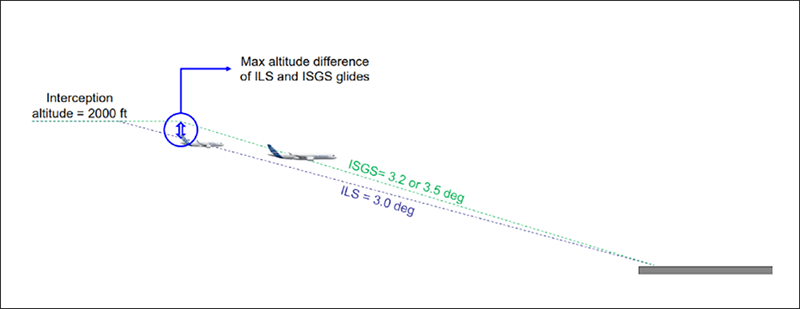On 1 October, Brussels Airport and Belgian air navigation service provider (ANSP) skeyes commence demonstration flights as part of the SESAR JU HERON Digital Sky Demonstrator. The aim of these flights is to assess whether landings with a steeper approach than usual could offer benefits in terms of reducing noise impact for surrounding communities, as well as lowering CO2 emissions and fuel consumption.
The purpose of the demonstrations is to assess the environmental impact of the 'Increased Second Glide Slope' solution, which specifically aims to reduce noise disturbance during the aircraft approach phase. By initiating landings at a steeper angle, aircraft will remain at a higher altitude for a longer time and will also fly at lower speeds, resulting in reduced noise impact for surrounding residents.
During the test period, aircraft will use new procedures with steeper descent angles of 3.2 and 3.5 degrees, instead of the usual 3.0 degrees, on the most frequently used runways, 25R and 25L. These adjustments required the development of specific RNP (required navigation performance) flight procedures for these demonstrations. An important milestone in the implementation of these new procedures was achieved a few months ago with a successful validation and calibration flight. In the meantime, the necessary publications have been released and approved by the relevant aviation authorities.
Demonstration flights in two phases
The first phase will run from October to December 2024, focusing on a descent angle of 3.2 degrees. During the second phase, from February to April 2025, flights with a 3.2 degrees angle will be conducted on runway 25R, while the descent angle on runway 25L will be increased to 3.5 degrees. The demonstration will take place in two phases, with airlines such as DHL, Brussels Airlines, TUI, and Vueling participating in the tests, while other airlines will continue to use the standard descent angle of 3.0 degrees.
The 'Increased Second Glide Slope' (ISGS) SESAR solution is developed in partnership with SESAR JU members, Eurocontrol and Airbus. This project is supported by CINEA - the European Climate, Infrastructure and Environment Executive Agency - and is one of the flagship projects within SESAR JU’s Digital Sky Demonstrators.
With these demonstration flights, skeyes and Brussels Airport are taking a major step towards cleaner, quieter, and more efficient aviation.
More about HERON

Demonstrator participants: Airbus, ADP, Air France, Airtel Atn , Altys Technologies, Brussels Airport, Deep Blue, DFS Deutsche Flugsicherung , Direction Des Services De La Navigation Aerienne (DSNA), EasyJet Europe, Enaire, Enav, Eurocontrol, European Satellite Services Provider (ESSP), Iga Havalimani Isletmesi Anonim Sirketi, KLM, Leonardo, Lufthansa, NATS, PANSA, Schiphol Nederland, SKEYES, Transavia France
These demonstrations are part of HERON (Highly Efficient Green Operations), a large international consortium. HERON is led by Airbus and aims to carry out a series of ambitious developments and demonstrations to reduce noise, flight delays, fuel consumption, and CO2 emissions in air transport by proposing reduction measures, including more efficient flight operations. HERON involves 26 partners from 11 countries and will be supported by 6 airlines, 8 air navigation service providers, and 5 airports across Europe.
